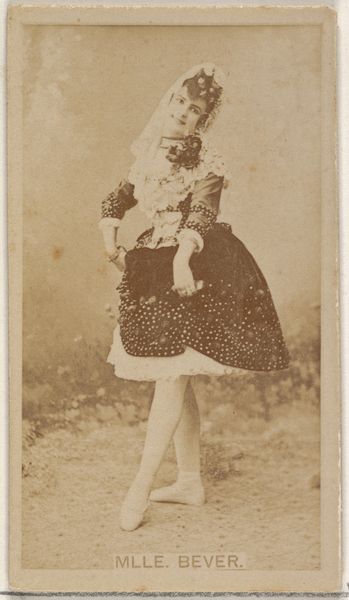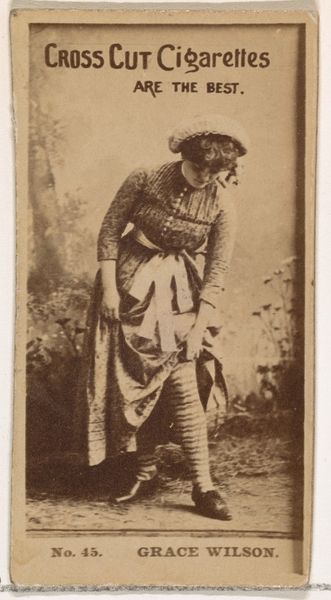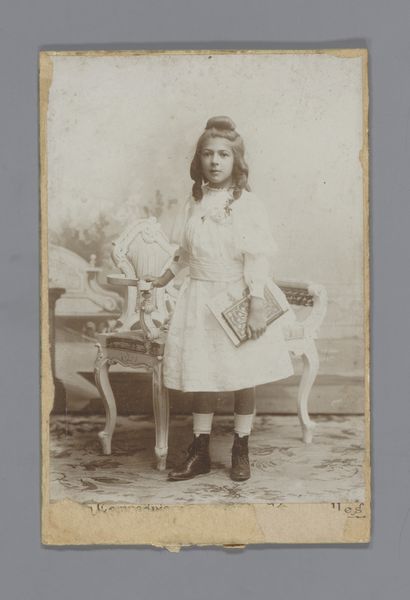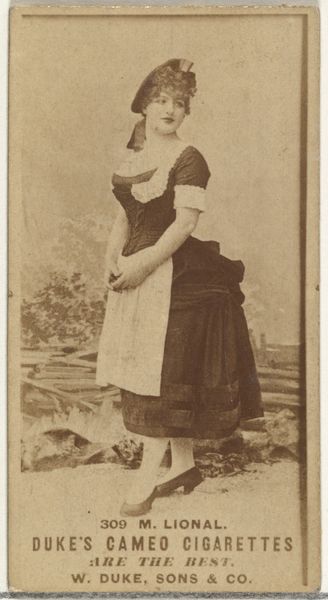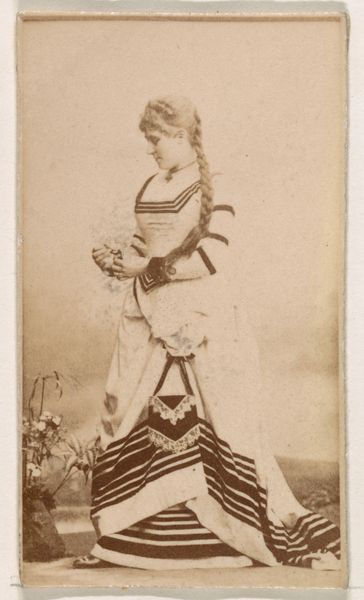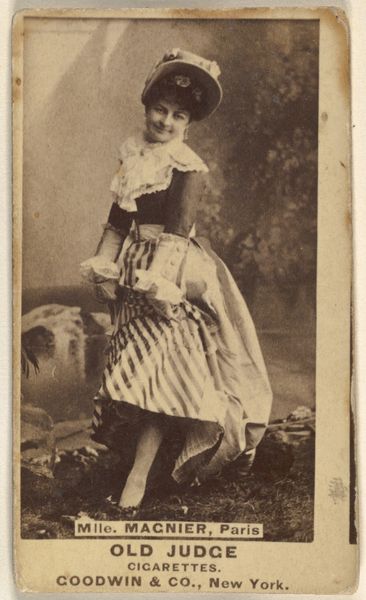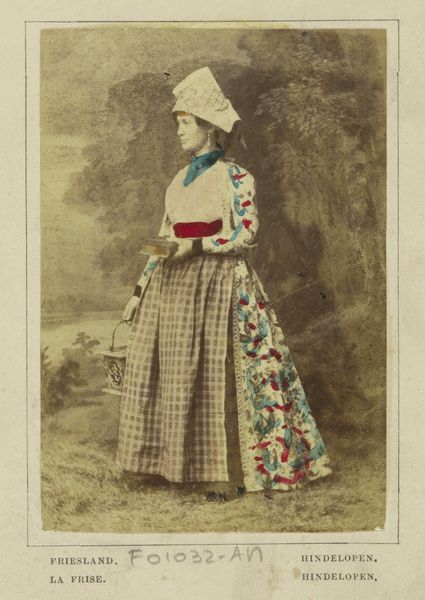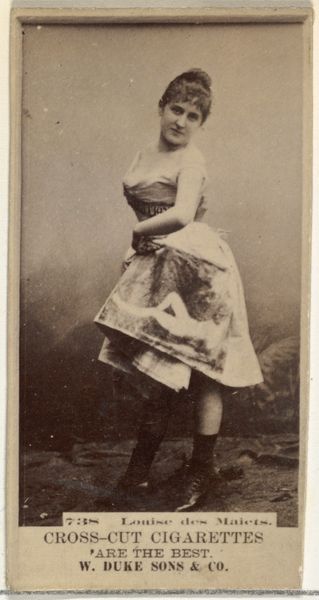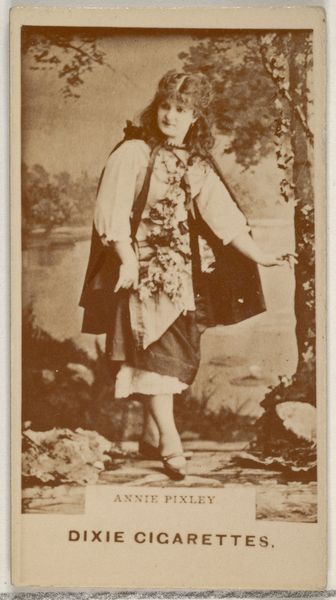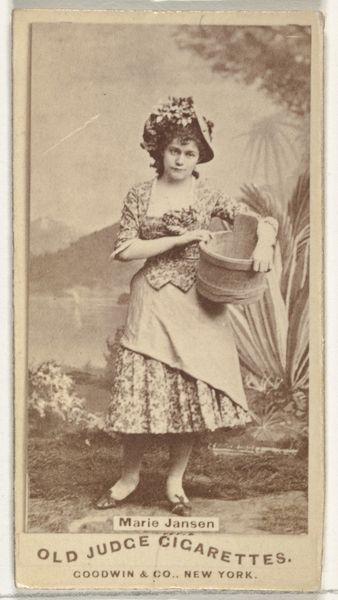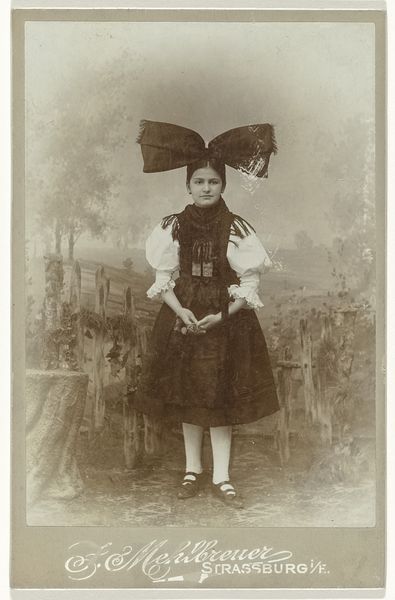
photography
#
portrait
#
16_19th-century
#
portrait image
#
photography
#
19th century
#
genre-painting
#
fine art portrait
Dimensions: height 256 mm, width 196 mm
Copyright: Rijks Museum: Open Domain
Curator: The photographic print you see before you is titled “Dubbelportret van twee onbekende jonge Siciliaanse vrouwen,” or "Double Portrait of Two Unknown Young Sicilian Women." It was created sometime between 1856 and 1914 by Giuseppe Incorpora. It's a striking image. Editor: It is! The first thing that strikes me is the relaxed warmth of it. It feels less staged than other portraits from this period. The girls’ smiles are genuinely charming, and their attire is beautifully rendered, capturing the everyday. Curator: Yes, Incorpora has presented them in what was called "typical" Sicilian garb at the time. What I find fascinating is the institutionalization of "type." Photography played a significant role in defining and disseminating these cultural images. The very act of labelling them 'typical' speaks to a need for categorization and control within a rapidly changing society. Editor: That's true, and perhaps this 'typical' label is more loaded than we might initially assume. Looking closer, their clothing itself is fascinating. The checkered patterns in the cloth, the white headscarves... it all seems to represent more than just utility. Curator: Absolutely. The pitcher, too. Vessels are laden with symbolic meaning, usually associated with women and nourishment, often used as cultural markers. We can consider the photographic process as another vessel, one designed to carry an idealized vision of Sicilian womanhood to a wider audience. Editor: I agree completely. These images are rarely neutral documents, even if they appear so at first glance. The backdrop, too, that suggestion of a rural landscape... all of it works together to build a particular visual narrative. It creates this sense of cultural memory. Curator: The context is vital. These photographs served as documents of Italian regional culture, as Italy was unifying. Consider also the dynamic between photographer and sitter: these girls become performers within the colonial gaze of the developing west, inadvertently helping solidify their social standing. Editor: Looking at this piece with those ideas in mind deepens my sense of unease, yet, those honest smiles draw me back into their lived experiences, creating an intriguing dialogue between performance and self. Curator: Indeed, by considering the image’s history, we can acknowledge both the personal expression captured by Incorpora and its public, societal function. Editor: Thank you, Giuseppe Incorpora, for this evocative glimpse. Hopefully one day we can restore the identities and stories to these young Sicilian women, they deserve their due credit.
Comments
No comments
Be the first to comment and join the conversation on the ultimate creative platform.

